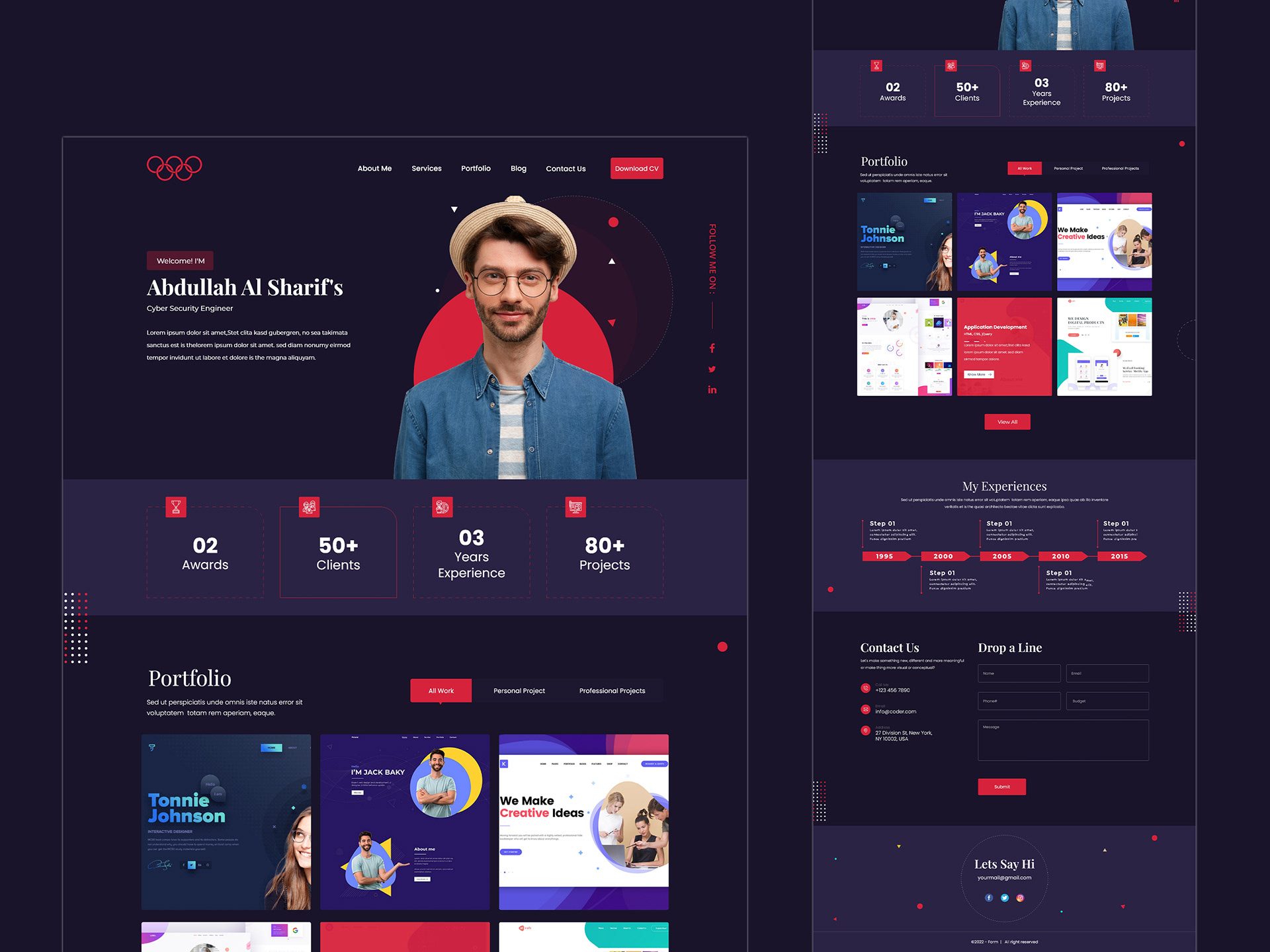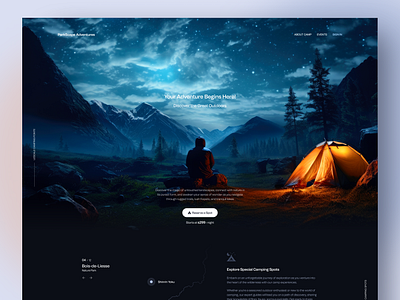Modern Web Site Design That Captures Focus and Converts
In an increasingly electronic landscape, modern web site design has emerged as a critical element in catching individual focus and driving conversions. By tactically using aesthetic hierarchy, receptive formats, and involving interactive aspects, designers can create experiences that not only bring in site visitors but likewise assist in meaningful communications. Additionally, efficient call-to-action techniques play a crucial function in guiding customers towards desired results. As we check out these essential parts, it ends up being clear that understanding their interplay can significantly impact a website's performance and individual complete satisfaction. What are the essential aspects that truly make a difference?
Significance of Visual Pecking Order
Visual power structure is a critical aspect in website layout, as it overviews users' interest and enhances their general experience. By tactically arranging material, developers can direct individuals to the most essential details first, consequently enhancing engagement and boosting usability.
Incorporating a logical circulation in content plan is important; as an example, placing one of the most critical info on top of a web page cultivates immediate recognition. Moreover, constant usage of typography, such as differing font sizes and designs, aids establish a clear material framework. This organization not only aids in navigating yet also builds count on, as customers feel extra comfortable when they can easily locate what they are searching for.
Inevitably, a well-executed aesthetic power structure not just boosts visual charm yet also substantially influences customer actions. By focusing on necessary components and ensuring a smooth experience, developers can effectively convert visitors into customers, reinforcing the value of this fundamental style principle in contemporary web site development.
Responsive Layout for All Instruments
Developing a seamless experience throughout different tools is important in today's digital landscape, where customers gain access to sites from smart devices, tablet computers, and desktops alike. Receptive design is a crucial method that makes sure internet sites adjust fluidly to various display alignments, sizes, and resolutions. By utilizing versatile grids, pictures, and CSS media inquiries, designers can produce designs that keep visual honesty and performance, no matter the tool being used.
The significance of responsive design expands beyond aesthetics; it directly affects individual engagement and conversion prices. An internet site that functions well on all devices encourages longer brows through and minimizes bounce rates, as users are extra likely to engage with material that is easy to browse. Furthermore, online search engine, especially Google, focus on mobile-friendly websites in their rankings, making responsive layout an important part of search engine optimization (SEO)
Including receptive design not only improves individual experience however also enhances the growth process. By developing a solitary website that works across tools, companies can save time and resources compared to establishing different mobile and desktop versions. Inevitably, receptive design is an essential approach for modern website style, making sure access and contentment for all users, despite their tool.
Engaging Interactive Aspects
While a receptive design prepares for a functional site, integrating interesting interactive elements is important for catching individual attention and cultivating much deeper links. Website Design. Interactive aspects, such as animations, tests, and clickable infographics, create a much more dynamic customer experience, urging site visitors to spend even more time on the site
Integrating interactive attributes can likewise guide customers with complicated information, making it much easier to digest try this site web content. As an example, interactive sliders can highlight product variations, while embedded videos can give presentations or endorsements that reverberate more than fixed pictures or message. Additionally, gamification methods, like benefits for engaging or finishing tasks with web content, can enhance individual inspiration and retention.
Effective use of interactive elements not only improves the user experience but can likewise lead to higher conversion rates. By making interactions informative and pleasurable, organizations can grow a feeling of loyalty and trust with their audience. Nevertheless, it is vital to balance interactivity with efficiency; excessively complicated attributes may impede site speed, negatively affecting user contentment. Ultimately, integrating properly designed interactive elements can considerably raise a web site's efficiency, driving engagement and conversions in today's competitive digital landscape.
Structured Navigation Practices
Effective navigation is a keystone of any successful site, as it straight influences customer experience and content ease of access. Structured navigation techniques make sure that customers can conveniently situate information, improving their communication with the site. A well-structured navigating food selection should be easy and user-friendly, commonly including a restricted variety of key classifications to avoid frustrating site visitors.
To achieve structured navigation, developers need to prioritize a hierarchical structure that logically arranges material. Applying breadcrumb routes can give customers with context concerning their existing place within the site, permitting seamless backtracking. Additionally, using drop-down food selections can effectively preserve room while still giving access to subcategories.
Receptive layout is important, as navigation needs to be functional across all devices (Website Design). Mobile users, specifically, advantage from touch-friendly menus and retractable sections that keep use without compromising looks

Reliable Call-to-Action Strategies
A well-crafted go to my site call-to-action (CTA) is important for leading users towards desired end results on a website, as it urges them to involve with web content or make a purchase. To optimize their efficiency, CTAs need to be clear, compelling, and purposefully placed throughout the website.
First, make use of action-oriented language that communicates necessity or value, such as "Begin," "Join Currently," or "Claim Your Discount rate." This language not only encourages individuals yet additionally sets clear assumptions regarding the next steps.
2nd, think about style components; CTAs must attract attention aesthetically with contrasting shades, adequate whitespace, and noticeable positioning. A button that is very easy to see and click boosts the likelihood of user interaction.
Additionally, personalizing CTAs based on individual actions or demographics can considerably boost interaction. Tailored messages resonate much more with users, driving greater conversion prices.

Conclusion
Finally, modern-day site layout stresses the combination of aesthetic hierarchy, responsive layouts, engaging interactive elements, streamlined navigation, and effective call-to-action approaches. These components collectively boost customer experience, making sure that site visitors remain involved and encouraged to explore web content further. By prioritizing these design concepts, businesses can substantially boost customer retention and conversion prices, ultimately leading to higher success in the electronic landscape. The continuous development of web style emphasizes its about his essential role in efficient online interaction and advertising.
In a significantly electronic landscape, contemporary internet site layout has emerged as a crucial element in catching user attention and driving conversions.Visual power structure is an important component in internet site design, as it guides customers' focus and enhances their overall experience.The significance of responsive style extends past appearances; it directly influences user engagement and conversion prices.Including receptive layout not only boosts individual experience yet also streamlines the advancement procedure. Ultimately, responsive layout is an essential technique for contemporary web site style, making sure ease of access and satisfaction for all individuals, no matter of their tool.